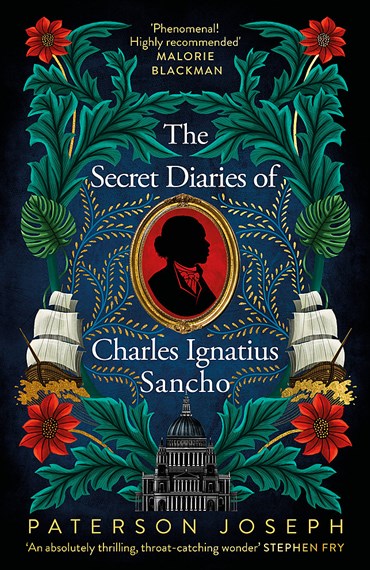The secret diaries of Charles Ignatius Sancho by Paterson Joseph

The author’s note at the beginning of this novel invites the reader to accept his version of a real person, Charles Ignatius Sancho, fictionalised to “avoid the lugubrious snares of a history-laden story, full of choice educational snippets”. In telling “the story of the Black presence in the United Kingdom in the eighteenth century” the author is telling "the tale of a lucky African orphan, who despite being born in abject slavery, rose to become a leading light of the abolitionist movement”. Then we are offered the “Prologue 1775”, explaining that this account , hidden until after his death, is for Charles Ignatius Sancho’s son, and immediately we are unsure of where the fiction and non-fiction begin and end, so the reader must surrender to the ensuing story as historical fiction. The first person diary account flits back and forth between current and past diary entries as well as in the form of letters. We learn that Sancho was born on a slave ship on the way to sugar plantations, orphaned then sent to England as a three year old where he became a servant to a household of three women in Greenwich. The sisters were well connected and Sancho came to the notice of the Duke of Montagu who encouraged him to learn to read and play music, however the sisters forbade this and he had to pursue his education in secret. Eventually he escaped but was pursued by the slave catcher as his status as the child of slaves in England equated to slavery. Like Fielding’s Tom Jones our hero is flawed, with a weakness for food, drink, gambling and a blatant self-interest, relying heavily on rich benefactors. He endures hardship, often of his own making, “self-absorbed to the detriment of my character” p197. But Sancho turns his life around for the love of his life, Anne Osborne, eventually becoming a father and shopkeeper with the right to vote.
No doubt this is an important novel, shining a light as it does on an aspect of English history previously unexamined but I found the prose, self-consciously trying for a regency flavour, difficult and too often the author tells rather than shows us aspects of the era. I was prompted to go and look at Wikipedia to read “educational snippets” about Charles Ignatius Sancho so the book has succeeded in raising awareness about this little known figure. By scanning a QR code on the cover the reader can “Discover Sancho’s London”. The author’s status as a “beloved British actor” and the topical nature of the subject matter will ensure the book’s popularity.
Themes: Regency England, Slavery, Abolition, Historical fiction.
Sue Speck